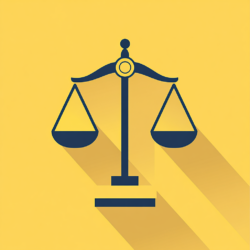When it comes to personal injury claims, the principle of fault plays a pivotal role. In many jurisdictions, the party deemed at fault for an accident can be held liable for the damages incurred by the injured party. However, defendants in these cases have several defenses available to challenge liability. This article explores the party-at-fault’s defense strategies against personal injury claims, including comparative negligence, assumption of risk, and specific statutory defenses.
Understanding Fault in Personal Injury Claims
Personal injury claims often arise from incidents such as car accidents, slip and falls, or workplace injuries. Determining fault involves establishing that one party acted negligently or intentionally caused harm. Negligence typically requires proof of four elements: duty, breach, causation, and damages. If the injured party can establish these elements, the party-at-fault may be liable for compensatory damages.
Common Defenses Against Personal Injury Claims
1. Comparative Negligence
One of the most widely used defenses is comparative negligence, which asserts that the injured party shares some responsibility for the accident. In jurisdictions that follow comparative negligence laws, damages awarded to the plaintiff can be reduced by the percentage of fault attributed to them. For example, if a plaintiff is found to be 30% at fault for an accident, their total compensation may be reduced by that percentage. This defense encourages a more equitable distribution of liability.
2. Assumption of Risk
The assumption of risk defense is based on the idea that the injured party knowingly engaged in an activity that carried inherent risks. This defense is commonly applied in cases involving recreational activities, such as skiing or contact sports. If the defendant can demonstrate that the plaintiff was aware of the risks and voluntarily chose to participate, they may successfully mitigate their liability.
3. Statutory Defenses
Certain statutes provide specific defenses in personal injury cases. For example, in some states, there are “Good Samaritan” laws that protect individuals from liability when they voluntarily assist others in emergency situations. If a defendant can show that their actions fell within the protections of such laws, it may provide a strong defense against liability.
4. Lack of Causation
Another effective defense is challenging the causal link between the defendant’s actions and the plaintiff’s injuries. The defendant may argue that the injuries were caused by an unrelated incident or pre-existing condition, thus absolving them of responsibility. Establishing a lack of direct causation can significantly weaken the plaintiff’s case.
5. Mitigation of Damages
Defendants can also argue that the injured party failed to mitigate their damages. After an injury, individuals have a duty to take reasonable steps to minimize their losses. If a plaintiff neglects to seek medical treatment or ignores medical advice, the defendant may argue that they should not be held fully responsible for the additional damages incurred as a result.
Conclusion
Navigating personal injury claims can be complex, and the party-at-fault has various defenses at their disposal. Comparative negligence, assumption of risk, statutory protections, lack of causation, and failure to mitigate damages can all serve as effective strategies in challenging liability. Understanding these defenses is crucial for defendants seeking to protect their interests in the face of personal injury claims. Legal representation can further aid in developing a robust defense, ensuring that parties involved have a fair opportunity to present their case in court.



